Magnetic Dust
Paintings made from commercial cassette tape can’t help but embrace a sense of decay that’s inherent to the material.

Interview by Rosecrans Baldwin
The Morning News: We’re in the age of Spotify and iTunes. Is using cassette-tape coating a sort of tribute to a lost medium?
Terence Hannum: It’s a nod more to obsolescence, how disposable we make things in our culture. Think about how CDs became a way just to transfer information to an MP3 player. The media became disposable. For me, cassettes became my medium because they were so easily disposed of but held so many memories for me. That infusion of memorial energy really empowered me. Continue reading ↓
Terrence Hanum’s “Decay” is on view at GUEST SPOT through Jan. 17, 2015. All images used with permission, copyright © the artist, all rights reserved.

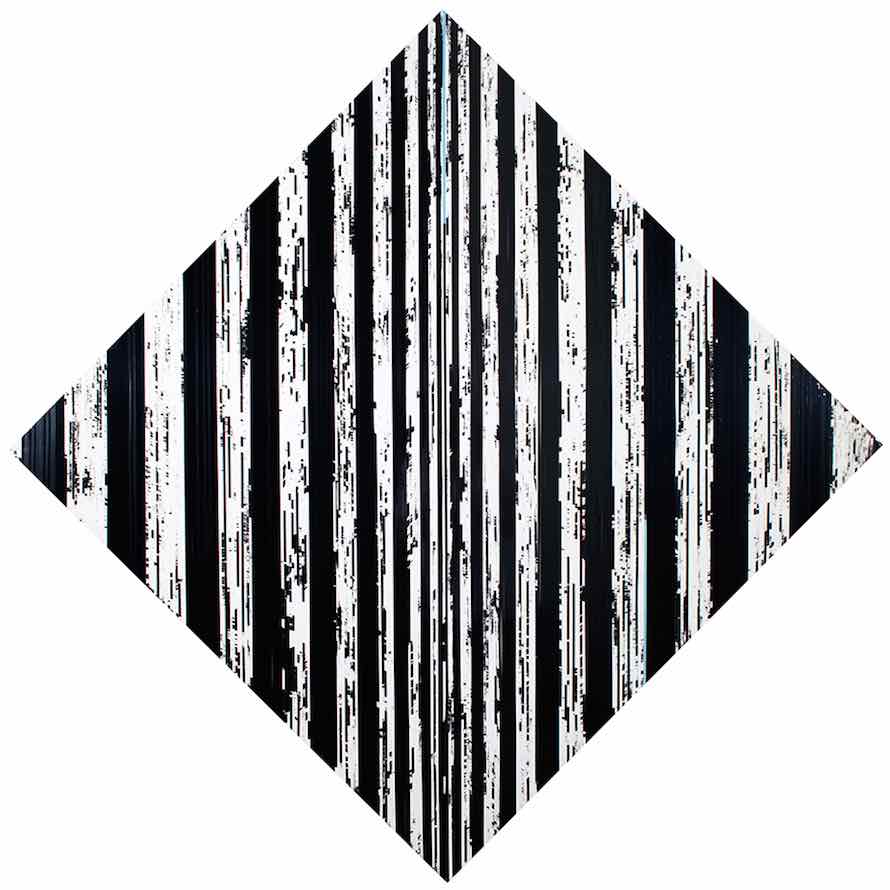
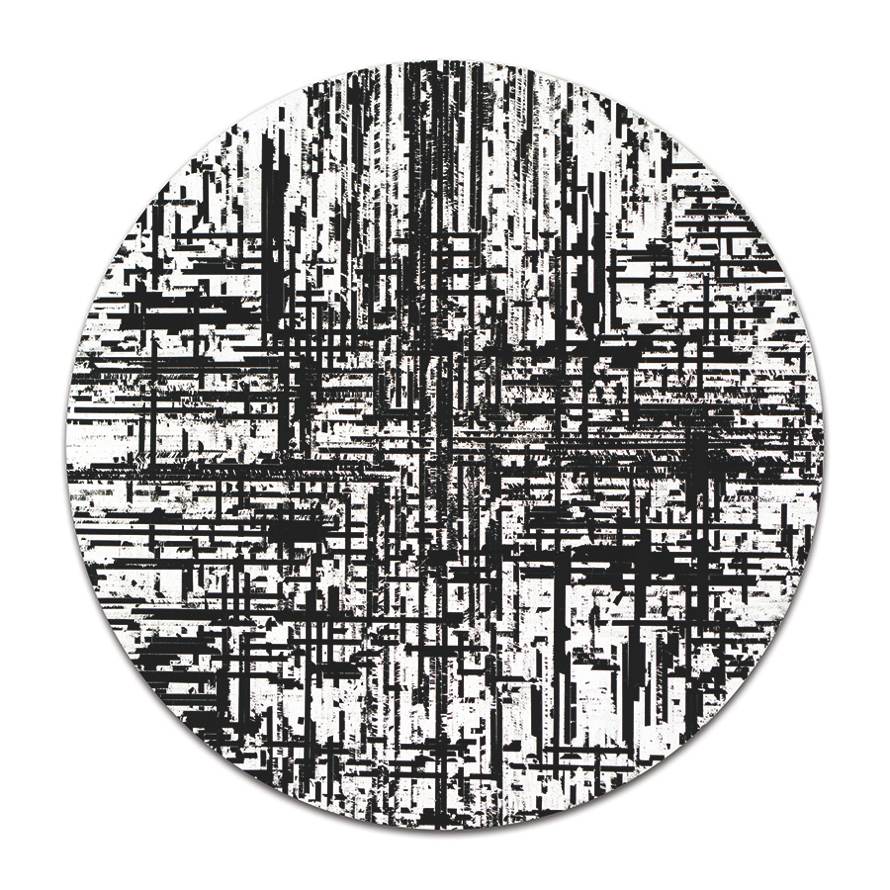
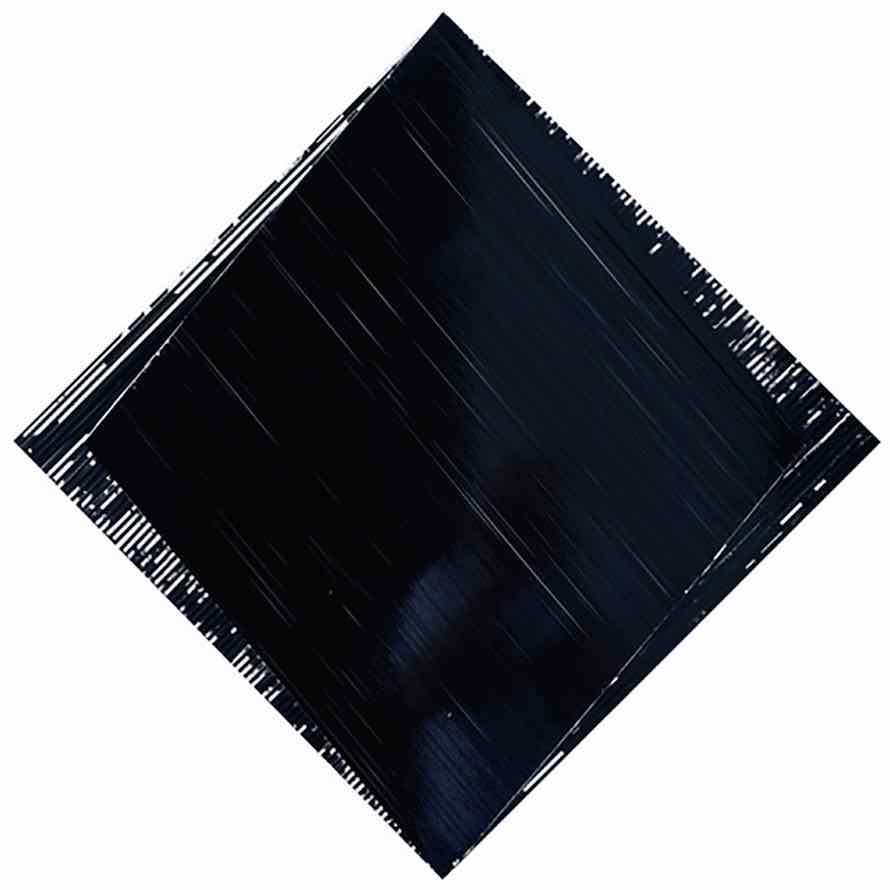
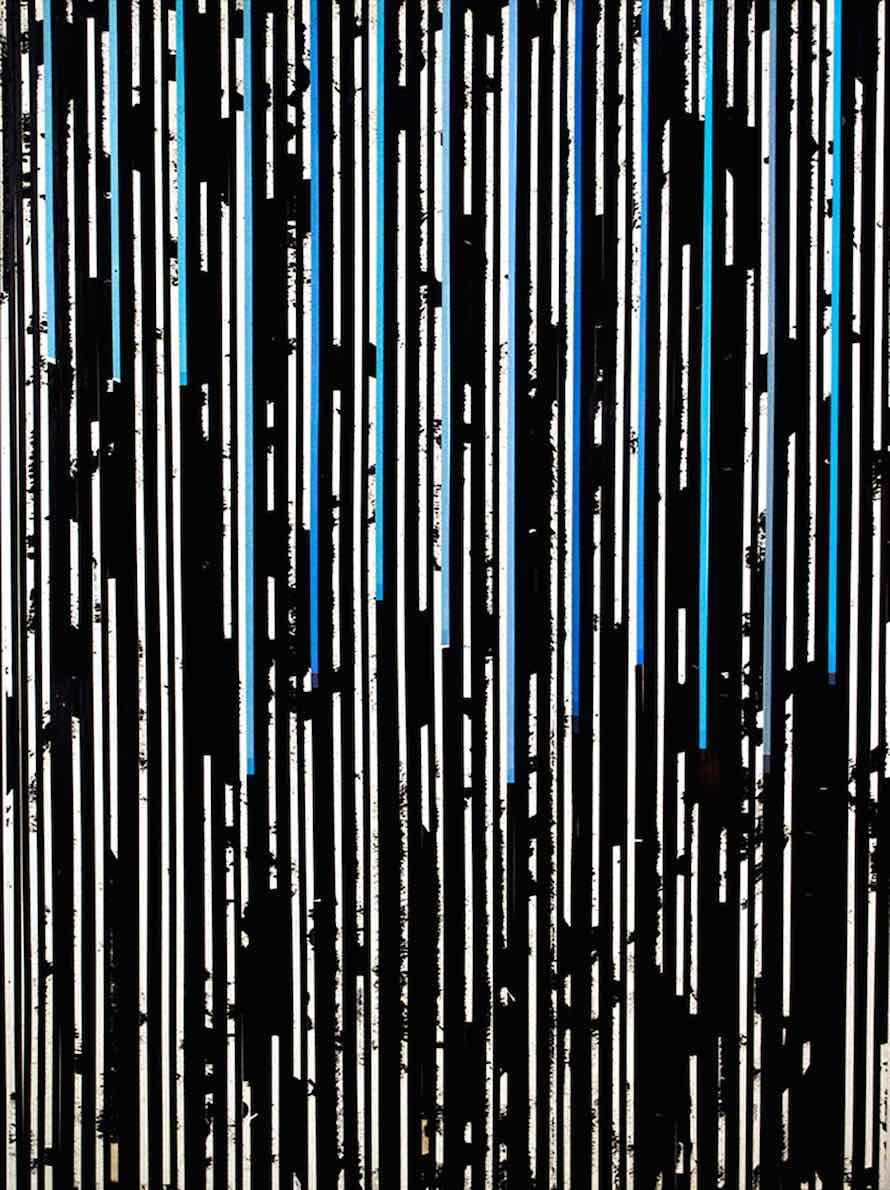
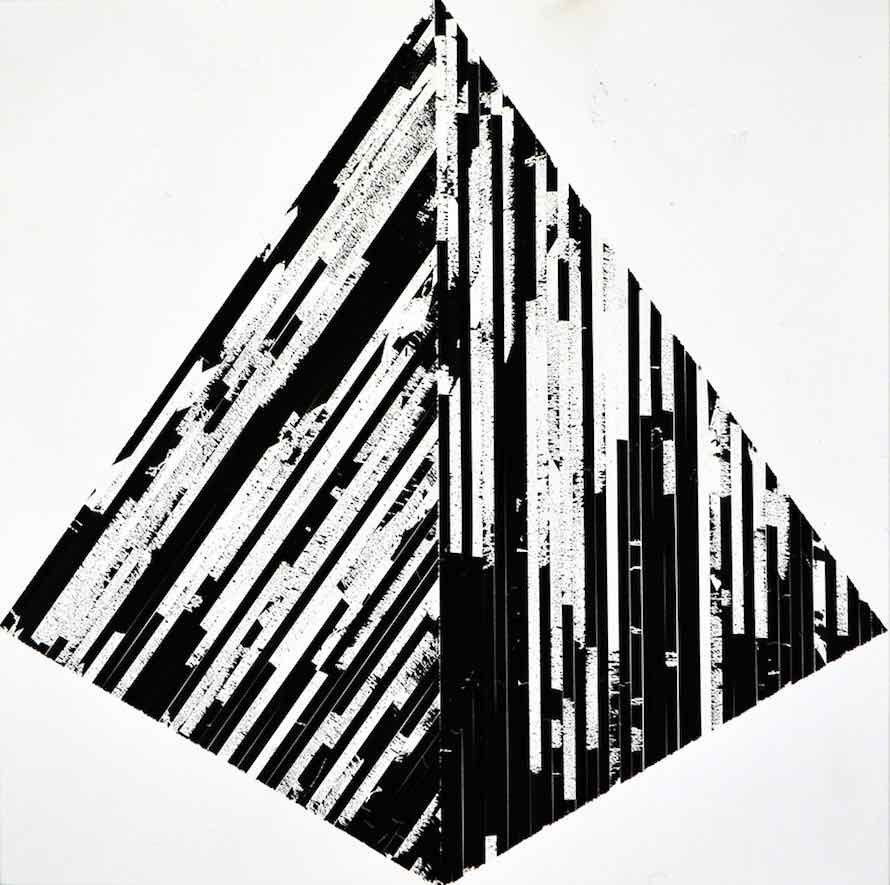
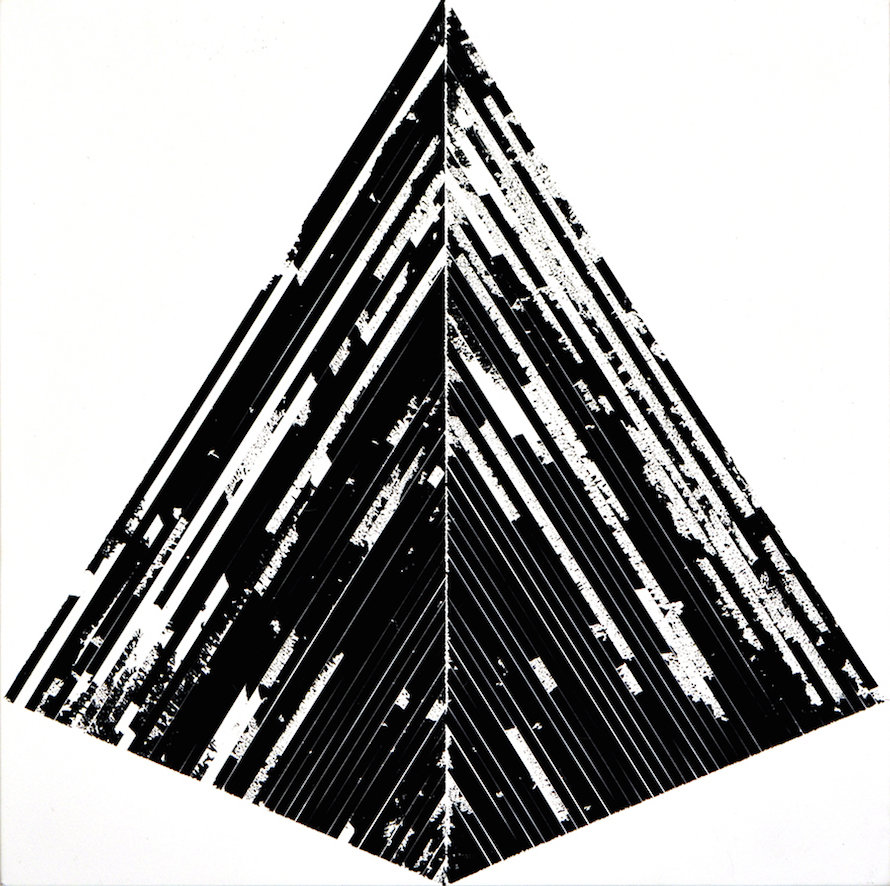
Interview continued
TMN: So I’m assuming you grow up with cassettes.
TH: The first cassette I was given was The Chipmunks Sing the Beatles Hits, and then the first tape I bought was Black Sabbath’s Paranoid. I think vinyl was more expensive and CDs came out shortly after and were just ridiculously expensive. So my friends made mixes for each other, you know, from our parents’ record collections or the radio. And then I would pick up different bands I liked or heard about, typically heavy metal, then I got into punk and hip-hop.
But my biggest connection would be being in hardcore bands since I was 12 or so, always making demos. Even in my band Locrian now we still release tapes. I don’t think there’s been a year since I was 12 that I haven’t made a tape. I even co-ran a tape label with my bandmate André (Locrian) called Land of Decay that put out tapes by a lot of diverse acts like Dead Letters Spell Out Dead Words, Gates, This Quiet Army, Neil Jendon, and more.
TMN: Talk about actually working with the cassette tape as a material. Do you make it into paint?
TH: The cassette tape kind of acts like paint, but it’s adhered down—I don’t use any brushes. It can be difficult but I have it pretty regimented with what I want to do. I don’t have to fight it much now. I try a lot of ideas and see what works.
I found the peeling action as a mistake; I was trying to correct the rigidity of a line and realized the ferric dust was left behind in the adhesive. It was a revelation. I just have to be open to that. Discovery is an important part of any system.
TMN: Looking at your previous work, there’s a strong attraction to technology and industry. Is your art about machines, or about humans?
TH: I mean, can we talk about a machine without talking about humans? Without talking about it as some extension of our faculty, if we made it, we adopt it, we dispose of it. Our relationships are so intertwined. I would say I am more interested in failures; the cassette is a failure of memory. We reject it because it doesn’t replicate an experience of sound adequately, or becomes less convenient. So in a way it is about many things, it’s hard to separate for me. I would say if I had to choose, maybe deterioration. Decay.
TMN: Do you listen to music when you work?
TH: Sometimes. I tend to like it quiet actually, then the hours fly by. It’s very meditative but it is also a great time to listen to a lot of music. I tend to like a lot of different things, like very minimal electronic music. I really like a lot of old Basic Channel and musique concrète so I listen to lot of reissues that Recollection GRM is doing through Editions Mego from Bernard Parmigiani, Luc Ferrari, etc. I also love this podcast Houston Rap Tapes (and a great book set too) and just love being turned on to some amazing hip-hop that Lance Walker DJs. It’s a solid hour of good, strange hip-hop. I’ll focus on some noise, too, or metal, like Dark Tribe—I just revisited their entire discography in the studio—pretty intense black metal. Again, I like a lot of stuff.
TMN: When it’s bad, or even sometimes when it’s good, abstract art can be empty, all surface. Does the decay in this series imply a loss of life?
TH: Well, the surface is very important. I really want the viewers to think about the surfaces of this old media. That’s what sucked me in to start working with it. Sure, decay could be a loss of life, but I think that things that decay have their own life. In the arc toward an end they gain something. It’s like, why do we want to look at dead malls we’d never want to visit? Things that are dead or dying fascinate us; maybe they give us a better sense of our own mortality, or make us feel better about our own life. I also place a lot of value on deconstruction and destruction. I think it’s just as important as creation.
TMN: When does music sound its worst?
TH: In the music itself, it’s worst when it’s unoriginal. For format I think any format can have character, even a low-res clipped MP3 can kind of be endearing to me. There’s this great piece by Cory Arcangel, “Iron Maiden’s ‘Number of the Beast’ Compressed Over and Over 666 times”—it just transforms the track. It’s great. But anyway it’s like a saturated magnetic tape, or like a CD with scratches. Don’t you ever get a sound file or an album to replace a scratched or damaged CD, or record, or tape that was eaten, and then miss that scratch, warble, or pop? I do.
TMN: In that case, why not just listen to only vinyl, or only cassettes?
TH: Well, because it’s hard to play vinyl in your car, right? I’m in no way a purist. I just think different media come with their own eccentricities. In general, our culture may move on to something else, but the other stuff is still around. I mean, look at vinyl’s resurgence—it just hit its highest sales in almost 20 years.
TMN: What was the first piece of art you ever sold?
TH: Wow. Back in college I sold this large piece on paper—it was mixed media, quasi-figurative, had a lot of bad diagrams. Just a mess. But this guy called me up and said he saw it and loved it and was recently divorced and said the piece was “fuckin’ brutal.” I still laugh about it, like he was describing a Cannibal Corpse song.
